Login
Registered users
The renovation of an antique crafts workshop
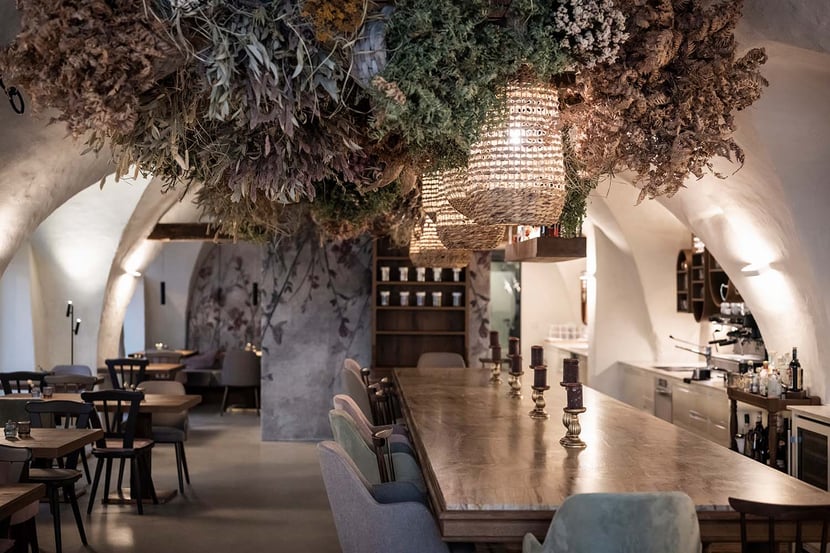
Important pages of Bolzano’s mercantile history were written between Via dei Portici and Via dei Carrettai, as it was once called. This vibrant area saw numerous merchants pass through its alleyways, squares, and warehouses during the Middle Ages as they traded between Italy and northern Europe. Signs of their activities have survived the centuries and are still visible today, with many of the spaces they occupied now renovated but still faithful to their origins and traditions.
Among the medieval arches in what today is called Via Dr. Streiter, a narrow street that follows the route of the northern moat of the first city to occupy this area, it’s hard to miss a two-story building called Haus am Gang. This building has now been transformed into a bohemian-style bistro called Bogen. With a sophisticated yet conservative approach, noa* network of architecture renovated the street-level floor, which, in the 19th century, was a workshop used by shoemakers, carpenters, carters, and timber and fruit merchants. It later became the first restaurant in the street. What life was like here between the 18th and 19th centuries is told by a painting uncovered during the project:
“During our research into what at the time was called Via dei Carrettai, we found a painting by Richard Wolff,” says Stefan Rier, founder of noa* and the architect in charge of the project. “It’s a fascinating still life painted around the turn of the 18th and 19th centuries. In the foreground, you can see the entrance to Bogen, exactly where it is today.”

The history of the street is clearly visible along its length. And the same is true inside Bogen, as hinted at by its name. Bogen is German for “arch,” a retained structural element that helps create the identity of the restaurant, starting from the entrance and, even more so, continuing through its meandering interior. The entrance arch was enlarged to install a triple black metal window with an essential, elegant design, which follows the shape of the arch and provides good natural lighting. Inside, the studio focused on organizing the almost 62 ft. (19 m) deep space around the four arches along the walls as well as lighting, with the curving arches punctuated by spotlights and the tables illuminated by point fixtures. Except for two tables at the end of the space, there are no pendant lights, with additional lighting provided by floor lamps.
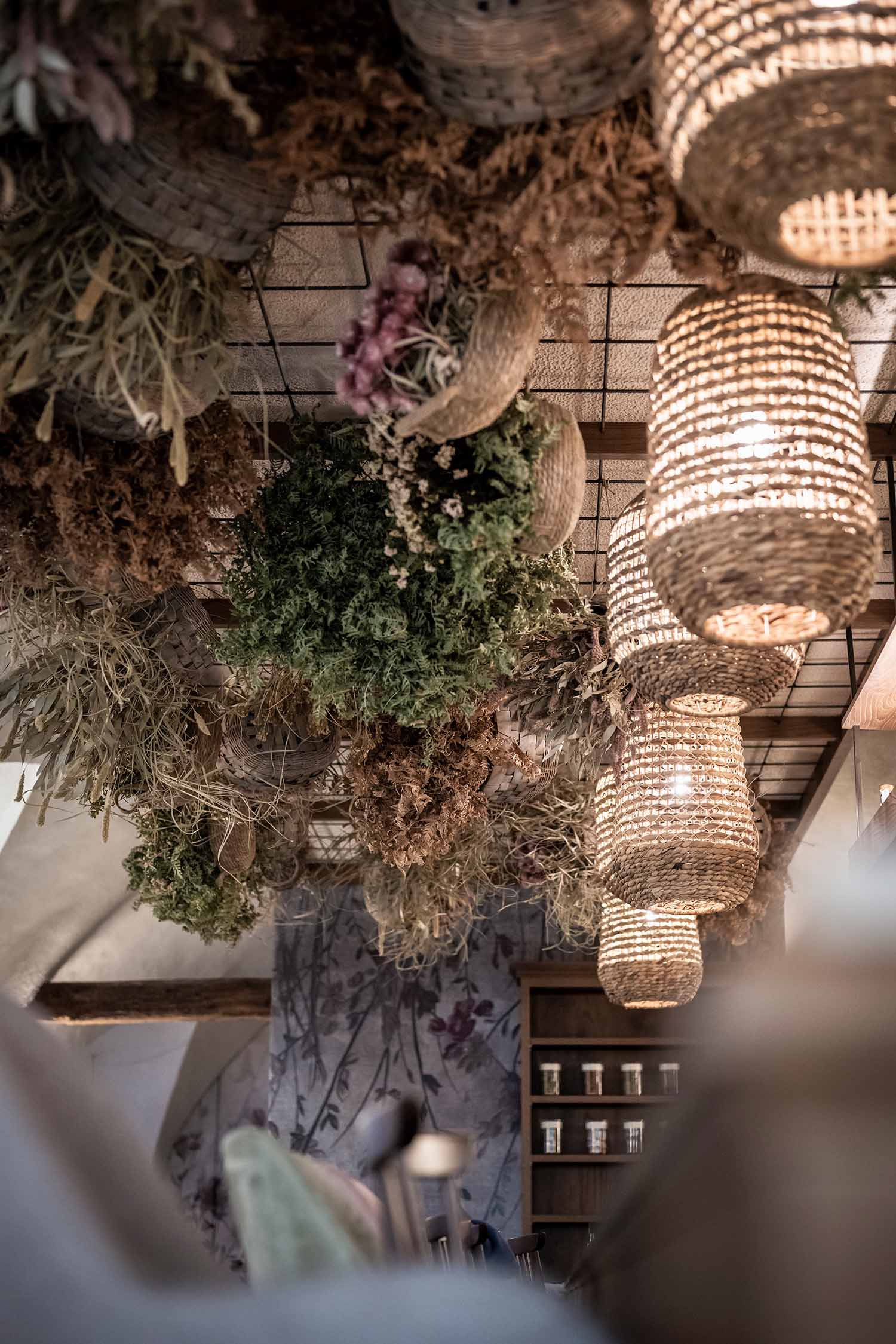
To create the bistro’s bohemian and romantic atmosphere, a floral theme was used as a feature of the interior and, especially, of the long central table, which sits below baskets of flowers in delicate tones and rattan lamps created by the owner, artist Roswitha Mayr. “The vault of flowers immediately established itself as the fulcrum of the interior design,” says noa* interior designer Silvia Marzani. “The upside-down baskets filled with dried flowers are an evocative image that expresses the transience and beauty of the flow of life.” This same theme is also reflected in the images and colors of the walls. The long table is already one of a kind, but it has a series of other entirely unique features, with all six legs different from each other, as if it were a makeshift table that some family has salvaged from somewhere. Despite its size, the table seems light in the space.

The central table is an invitation for several people to get together and socialize. The smaller dining tables act as a counterpoint to that, with a feeling of intimacy and privacy created by virtue of their position beneath the arches. This feeling of privacy is further accentuated under the first pair of arches, where the walls are covered with a floral print fabric and the seats are set back into the wall. The same continuous dialogue between past and present can be seen in the chairs, with some new and made of wood and fabric, and others repainted vintage pieces.
“In this project, we wanted to take care of every detail,” concludes Silvia Marzani. “We successfully created a coherent design with a strong contemporary character in a centuries-old space. It was simultaneously a step into the past and present of Bolzano.”

Late last year, Bogen was awarded the Special Prize Interior in the Restaurants category of the 2022 Prix Versailles. The prize, associated with UNESCO, aims to encourage better interaction between businesses and culture by highlighting the best in contemporary commercial architecture. The jury of the 2022 Prix Versailles was chaired by philosopher Gilles Lipovetsky and included professionals from different disciplines, including architect Thom Mayne, DJ Charlotte de Witte, and director Mahamat-Saleh Haroun. Past awards have included such jury members as Bjarke Ingels, Patricia Urquiola, Massimo Bottura, and Steve McCurry.
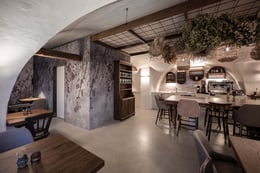


















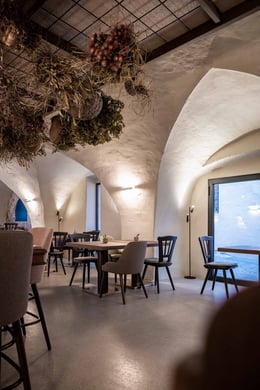




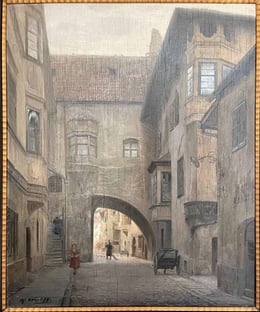
Location: Bolzano, Italy
Architects: noa* network of architecture
Client: Roswitha & Benjamin Mayr
Completion: 2021
Area: 188 m2
Photography by Alex Filz, courtesy of noa* network of architecture